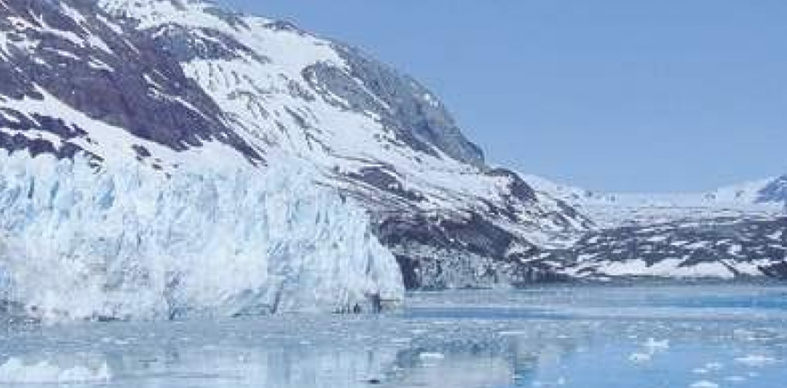Glaciers of Satluj River Basin Under Threat, May Lose Significantly by 2050

Image Courtesy: New Indian Express
The Himalayan glaciers are not in good health due to climate change. A recent study says that the Satluj River basin glaciers are fast melting and may lose significantly by as soon as 2050. The research estimates that the melting would cause 33% of the glaciers to disappear by 2050 and 81% by the end of the century. With the high mountain area losing the glaciers fast, the communities living in the region are also getting vulnerable. Also, water availability for irrigation and power projects could also be hit adversely.
The Satluj basin is among the dozens in the Himalayan regions having thousands of glaciers. The basin alone has some 2,026 glaciers of different sizes spanning 1,426 square kilometers (sq. km). The smaller glaciers will melt faster; those having area of less than 1 sq. km will experience about 62% loss by 2050, according to the findings in the study.
Almost half of the annual flow of Satluj comes from snow and ice melt feeding up to 80% of the inflow into the Bhakra dam in Himachal Pradesh. Satluj is a major tributary of the Indus River and the Beas meets it. The Bhakra dam in Himachal receives water from both Satluj and the Beas and is a major source of hydro- electricity generation and also irrigation. The Bhakra reservoir (Govind Sagar) has a capacity of 9,340 million cubic meters and has the potential of generating 4,566 MW of hydro-power.
The researchers used various techniques to estimate the amount of water stored in the glaciers in the basin and then applied climate projection models to analyse the behaviour of the glaciers with increase in temperature. The study has been done by scientists of the Divecha Centre for Climate Change situated at the Indian Institute of Sciences (IISC). The results are not yet published, but are likely to appear in the journal Current Science.
The researchers used ‘velocity-slope’ and ‘volume area’ scaling methods to estimate volume of stored waters in the Satluj glaciers. Temperature and rainfall data were obtained from the meteorology stations at Kaza and Rakcham in the basin. Data from the Landsat satellite was used to analyze snow lines and precipitation gradients.
Their analysis showed that 56% of the total water is stored in large glaciers (over 5 sq. km) spanning an area of 517 sq. km. The largest glacier is spread over 66.8 sq. km and contains 6.5 giga tonne (GT) ice in Tibet. The basin has already witnessed a loss of 21% or 16.4 GT of glacier volume between 1984 and 2013. Based on extreme model (GFDL-CM3) analysis the researchers found that almost 55% of the glaciers would be wiped out by 2050 and only 3% of it would remain by 2090.
“Glaciers in the Satluj basin are likely to lose 81% of their area if the temperature rises by 7.9 degrees by 2090. In terms of numbers, 97% of the total number of glaciers will disappear. The biggest loss is projected for glaciers measuring less than one square km in area. This is because of shorter response time of small glaciers, making them more vulnerable to climate change,” – said Anil V Kulkarni, who led the research.
“The disappearance of smaller glaciers located at lower elevation will change the pattern and overall availability of water to the various hydropower projects located in downstream areas of the basin, thereby posing new challenges for smaller communities in the Himalayan region,”the research paper observed.
Get the latest reports & analysis with people's perspective on Protests, movements & deep analytical videos, discussions of the current affairs in your Telegram app. Subscribe to NewsClick's Telegram channel & get Real-Time updates on stories, as they get published on our website.














